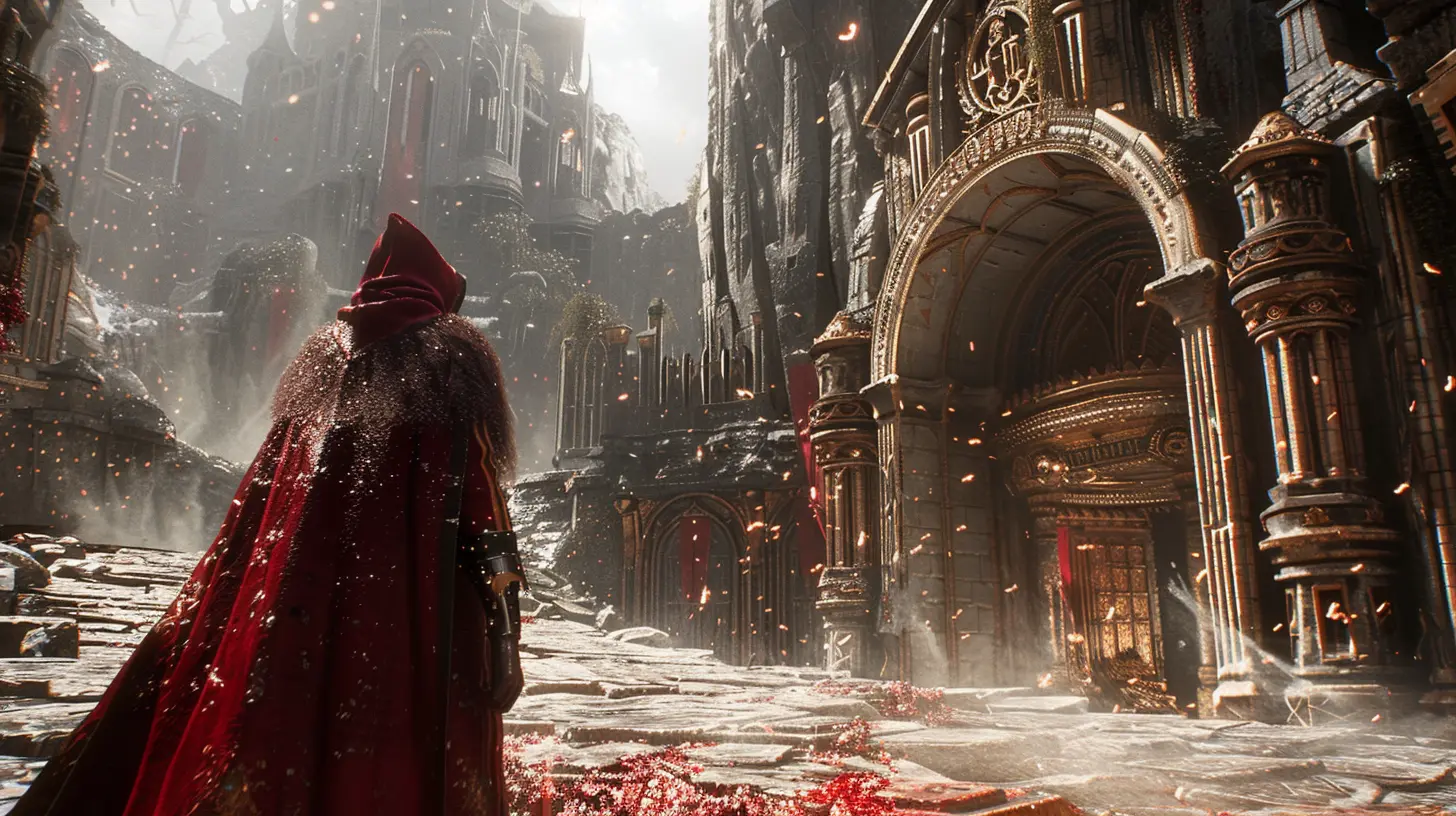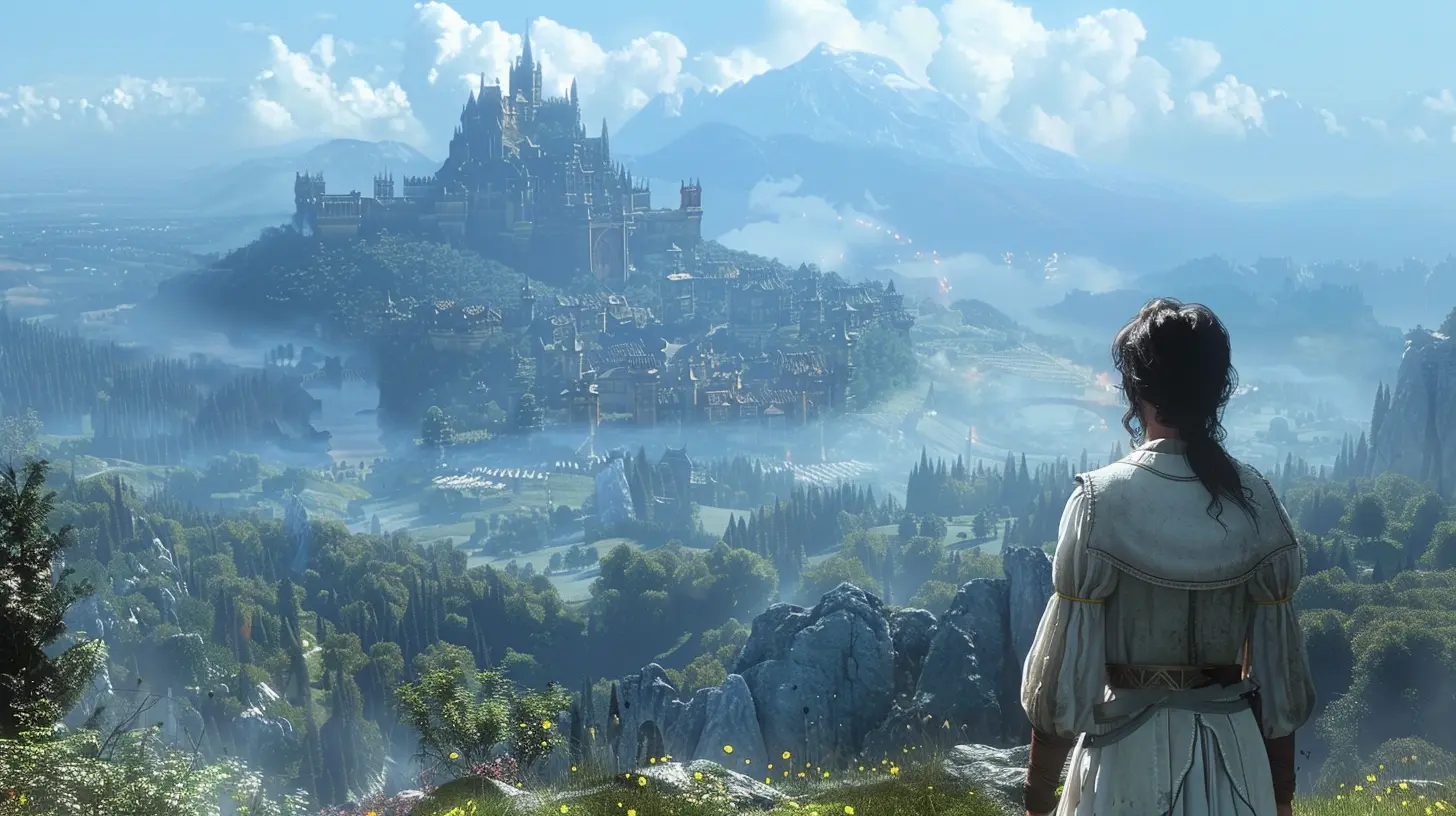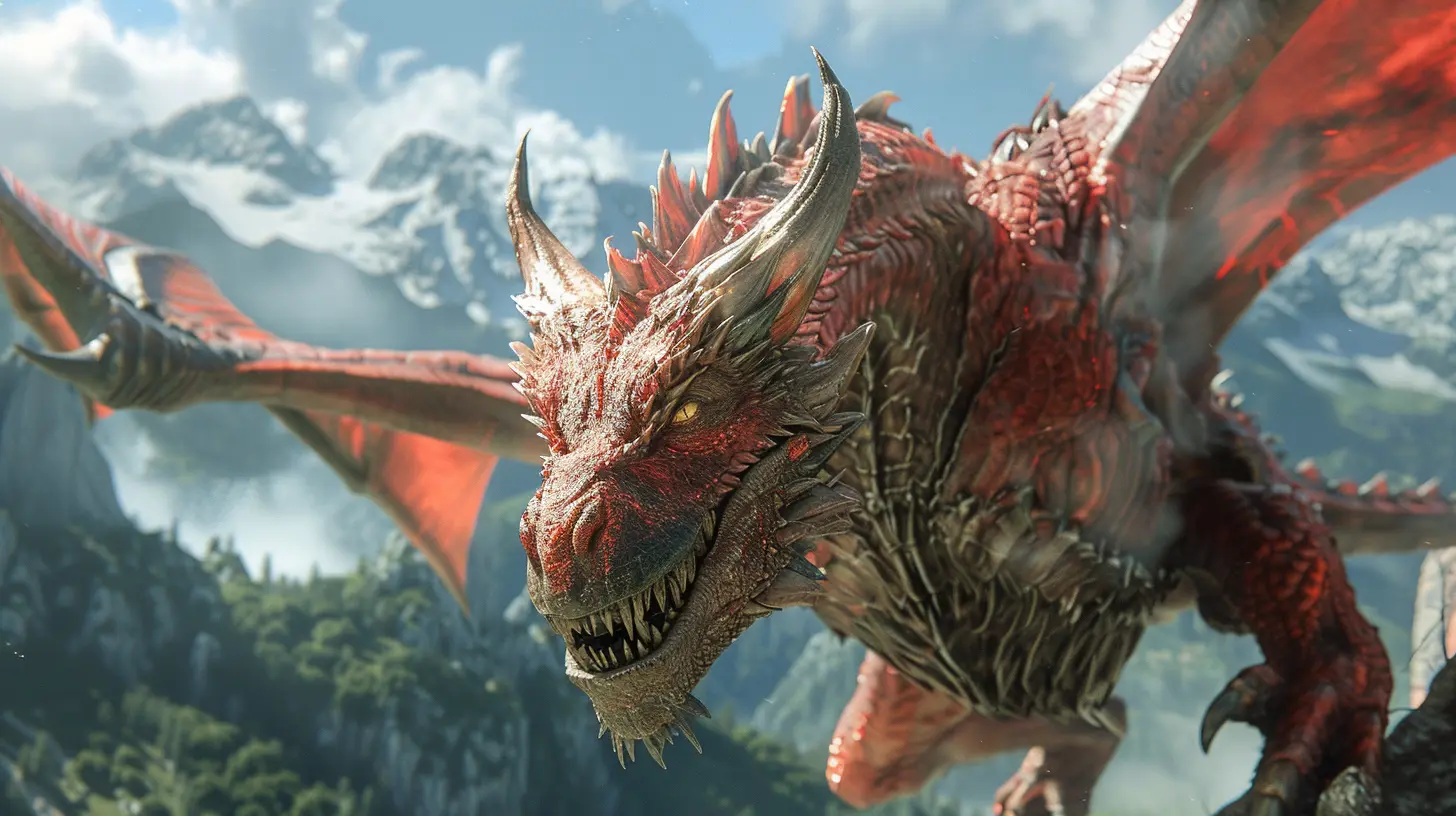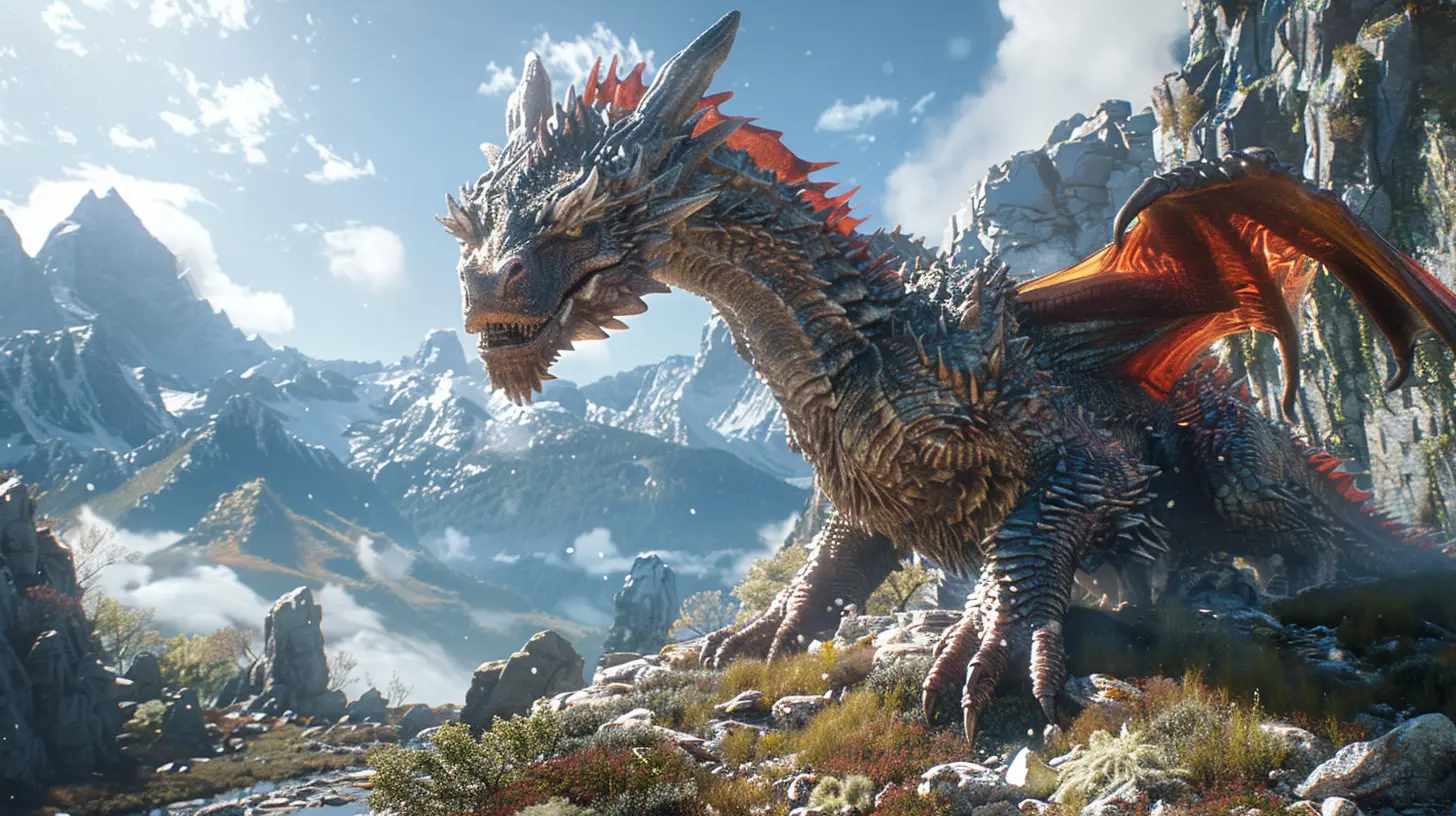How Realism and Fantasy Collide in Action Games
2 October 2025
If you've ever dodged bullets in a gritty urban warzone or summoned magical beasts to save a crumbling kingdom—all within the same gaming session—you've experienced the wild crossroads where realism and fantasy collide. In action games, these two seemingly opposite styles are constantly tangoing, and that dance? It’s what makes modern gaming so immersive, unpredictable, and, frankly, epic.
So today, we’re diving deep into this collision of realism and fantasy—why it's important, how developers blend the two, and what it means for us as players. Buckle up, because this is more than just an analysis—it’s a glimpse into the heart of modern action game design.
What Do We Mean by Realism and Fantasy?
Let’s break it down simply. Realism in video games is all about mirroring the real world—physics, consequences, visuals, and human behavior. You know, things that make you say, “Whoa, that felt real!” It’s why bullets don’t curve, your stamina bar runs dry, and falling from high places actually hurts.On the flip side, fantasy throws logic out the window and says, “Let’s have some fun!” We're talking dragons, magic, superhuman strength, reality-defying weapons, and worlds where the laws of physics no longer apply. It’s escapism at its finest.
But what happens when you take the grounded feel of realism and smash it together with the limitless possibilities of fantasy? Well, you get some of the most beloved and unforgettable action games out there.
Why Mix Realism and Fantasy?
You might think combining realism and fantasy would create a jarring experience—but oddly enough, it doesn’t. In fact, it creates a balance that keeps us immersed and entertained.Let me ask you something: Do you want every game to feel like a military simulator? Or would you rather spend 100 hours in a game where you can pull off gravity-defying ninja moves but still feel the weight of your character's actions?
Realism gives games stakes. Fantasy gives them flair.
Players love being grounded enough to care—and powerful enough to escape. That blend keeps the adrenaline high and the emotional connection strong.
The Roots of Realism in Action Games
Realism in gaming has come a long way. Back in the early days, even something as basic as a reload mechanic was considered “next level.” Now? We’ve got motion-captured animations, advanced AI behaviors, bullet trajectory systems, and destructible environments that mimic real-life physics.Games like Call of Duty, Rainbow Six Siege, and ARMA have pushed the boundaries of realism. They emphasize tactics, real-world weapon mechanics, and environments that react naturally. These games try to replicate the tension of real-life conflict—often making you sweat bullets (pun intended) just clearing a hallway.
But too much realism can be overwhelming. That’s why developers started adding in bits of fantasy to spice things up or make the gameplay more forgiving and fun.
Fantasy in Action Games: When Reality Isn’t Enough
Fantasy has always had a home in gaming. But in action games—especially ones that aim to be a little grounded—fantasy works as a cheat code for creativity.Take Devil May Cry, for example. You’re wielding a giant sword one moment and blasting energy waves the next. Still, there's a tactical weight to how you fight, dodge, and react to enemies. It’s flashy, yes, but there’s structure to the madness.
Or think of Control by Remedy Entertainment. Set in a brutalist office building that shifts like a Rubik’s cube, you’re using telekinesis and flying while also ducking behind cover like a regular shooter. The world is surreal, borderline abstract—but the combat? It has real consequences, rules, and strategy.
That’s the magic: taking mechanics rooted in realism and dropping them into a world that twists reality.
The Seamless Blend: Games That Nail the Collision
Let’s look at a few action games that masterfully mix both worlds.1. The Last of Us Series
Yes, it’s grounded. The scarcity of resources, the emotional weight of every kill, the way Joel winces when hit—that’s pure realism. But let’s not forget the infected. These aren’t just scary zombies. They're the result of a mutated fungus—a speculative element rooted in a real scientific possibility, but twisted into something fantastical.The Last of Us makes its fantasy believable because it’s built on realistic emotions, behaviors, and visuals. The result? A world that feels terrifyingly possible.
2. God of War (2018 & Ragnarok)
Big shoutout to Kratos, the god-slaying Spartan with some deep-rooted daddy issues. At first glance, this is pure fantasy—you’re fighting Norse gods and mythical beasts. But here's the kicker: Kratos’ combat feels grounded. There’s weight to his axe. He needs timing, parries, and strategy.And emotionally? The relationship between Kratos and Atreus is painfully human. That realism anchors the game in a way that makes the fantasy ten times more impactful.
3. Red Dead Redemption 2
This one leans hard into realism. But even here, we see fantasy elements sneak in through the storytelling, surreal dream sequences, and almost mythical tone the game takes on in certain missions. It’s subtle, but it adds that layer of “epic” that separates the game from being just another cowboy simulator.The Core Design Philosophy: Grounded Believability
Want to know the secret sauce? It’s not about being 100% realistic or 100% fantastical. It’s about grounded believability—a concept where even the most farfetched powers or creatures are given rules.Games like Horizon Zero Dawn do this beautifully. You’re fighting robot dinosaurs in a post-apocalyptic future, but the world makes sense. The technology, the tribes, the history—it all fits together like puzzle pieces.
Believability doesn’t mean “real.” It means consistent, logical, and immersive.
Gameplay Mechanics: Where Realism and Fantasy Shake Hands
This collision isn’t just about story or visuals—it’s baked right into the gameplay.- Movement: Realistic games might limit you with stamina meters or injuries, while fantasy games have double jumps and wall running. The smart games put both together. You can pull off cool moves, but timing and skill still matter.
- Combat: Think of Sekiro: Shadows Die Twice. Here’s a game that demands precise parrying and careful strategy—realistic swordplay—but you're also resurrected using mystical powers. It's punishing but fair, and that balance keeps you hooked.
- Environment Interaction: Realistic games make you open doors slowly and check every corner. Fantasy games let you blast through walls or teleport. The mix? Games where you might sneak through vents and then use a magical device to escape. Keeps you guessing, right?
Why Players Love the Collision
Simple: It hits both sides of our gamer brains.We love feeling powerful, unstoppable, and larger than life—that’s the fantasy side. But we also crave challenge, consequence, and immersion—that’s realism.
When a game nails both, it doesn’t just entertain—it pulls you in emotionally. You worry about your character, feel their exhaustion, celebrate their victories, and take joy in mastering every mechanic.
It’s like watching a superhero movie that still manages to make you cry. You’re in it not just for the explosions, but for the story behind them.
Common Challenges in Blending Realism and Fantasy
Now, don’t get it twisted—merging these two styles isn’t easy.- Risk of Disconnection: If the realism is too heavy, fantasy elements might feel out of place. Like suddenly flying in a game that was all about stealth.
- Balance Issues: Superpowers can break the challenge. Realism demands rules—so devs have to build in limitations to keep gameplay fun (cooldown times, resource costs, etc.).
- Visual Clashes: Picture realistic urban warfare with enemies that look like cartoon demons. Jarring, right? Artistic cohesion is key.
Good developers know how to ride this line. It’s all about moderation, consistency, and giving the player just enough of each to keep them hooked.
The Future of This Collision in Gaming
With the rise of more powerful hardware and AI, expect the blend to get even tighter. Imagine games where your character ages realistically and wields ancient magical powers passed down through bloodlines. Imagine enemies that learn your moves like a real fighter but are creatures from another dimension.Genres are already blurring, and action games are becoming more experimental. The realism-fantasy collision isn’t going anywhere—it’s evolving.
Virtual reality, for instance, is a goldmine for this blend. A realistic VR sword-fighting game could still let you slow down time or cast fire spells—making you feel like a true warrior mage, grounded in your movements but free in your power.
Final Thoughts
At the end of the day, action games are about impact—making you feel something. When realism and fantasy collide, they create a gaming experience that’s grounded but limitless.You feel the weight of the world but still leap through it with style. You bleed—but you also become a legend.
So the next time you're dodging enemy fire while summoning lightning from your sword, remember: You're not just playing a game. You're walking that delicate line between the believable and the unbelievable—and loving every second of it.
all images in this post were generated using AI tools
Category:
Action GamesAuthor:

Tayla Warner
Discussion
rate this article
1 comments
Zaylee McAllister
Great insights on the balance between realism and fantasy in action games! Exploring how these elements enhance gameplay truly enriches the player's experience. Keep it up!
October 2, 2025 at 3:40 AM

Tayla Warner
Thank you! I appreciate your feedback and am glad you found the discussion insightful.


